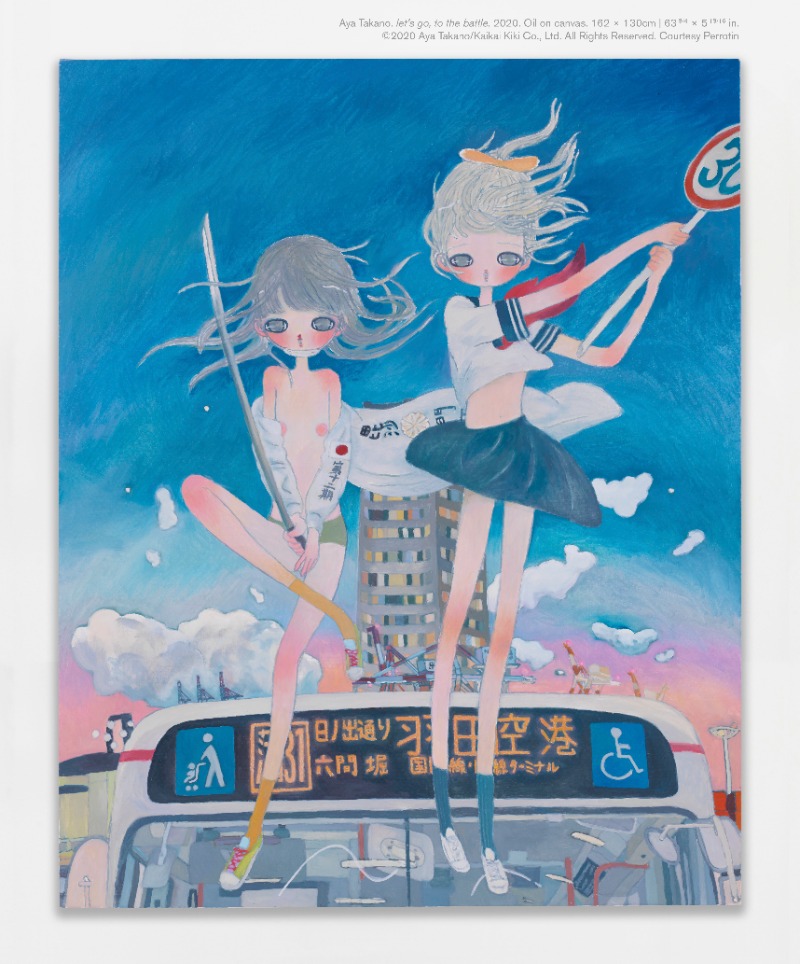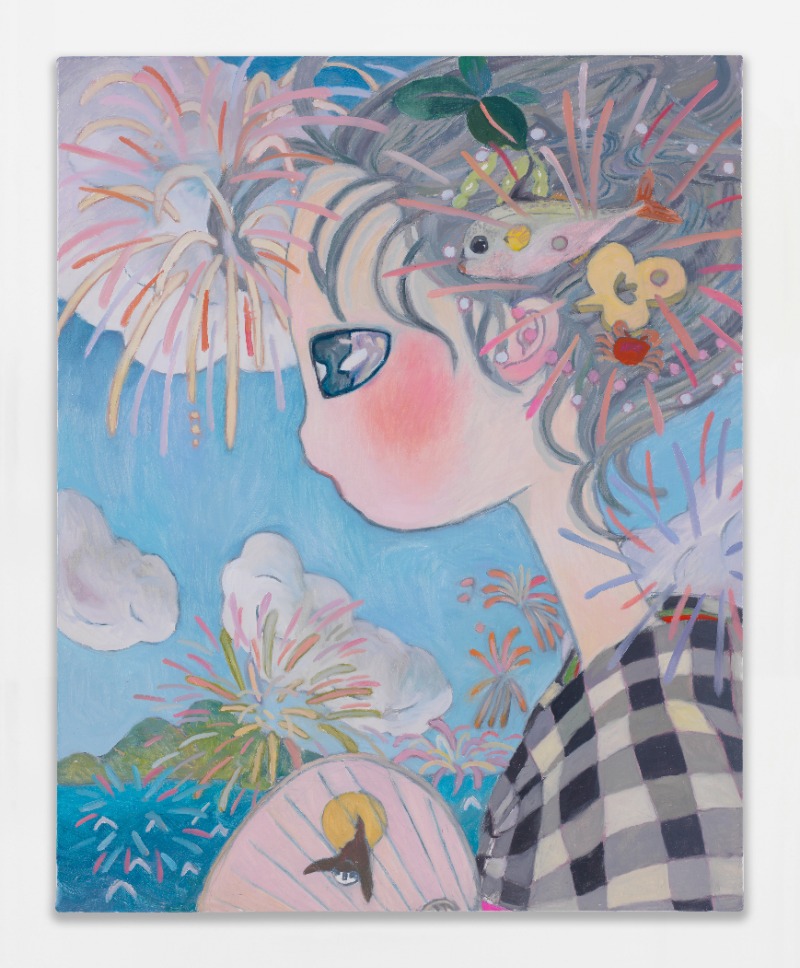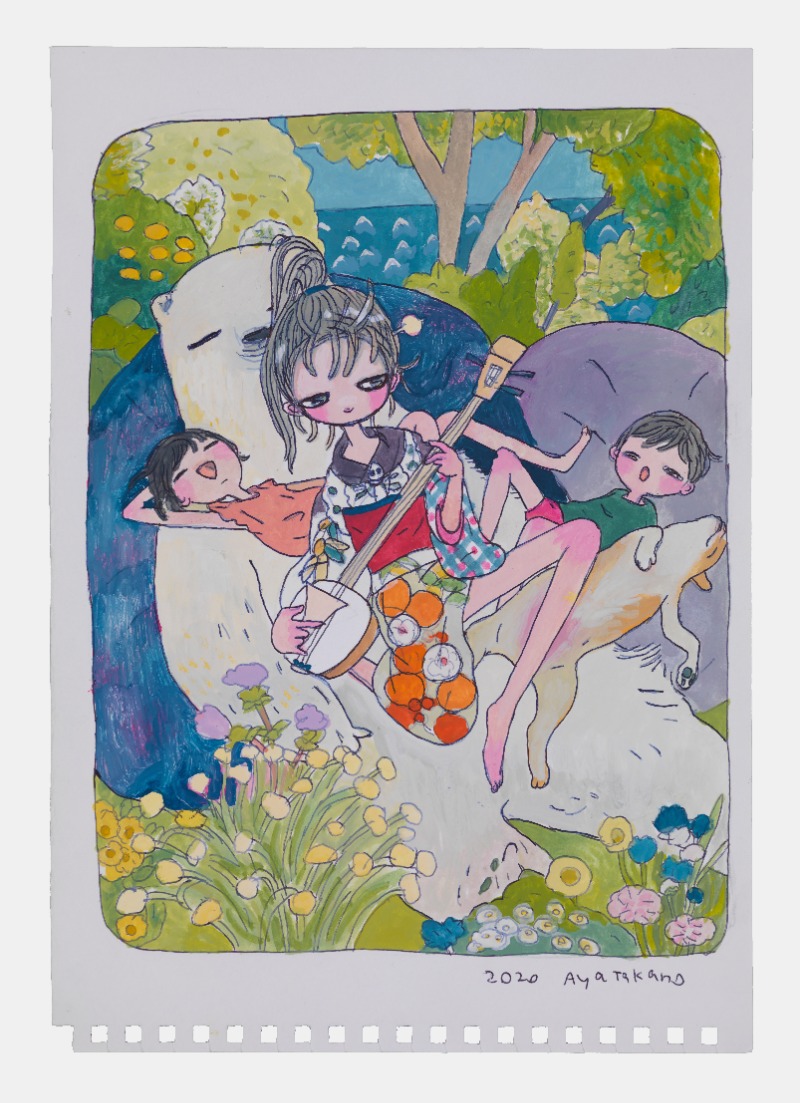
| Period| | 2020.09.18 - 2020.10.23 |
|---|---|
| Operating hours| | Mon-Fri 10:00-18:00 |
| Space| | Perrotin Samsheong/Seoul |
| Address| | 5, Palpan-gil, Jongno-gu, Seoul, Republic of Korea |
| Closed| | Sun, Mon, Public Holiday |
| Price| | Free |
| Phone| | 02-737-7978 |
| Web site| | 홈페이지 바로가기 |
| Artist| |
|
정보수정요청



|
|
Exhibition Information




Girl meets the girl: Aya Takano ahead of Let’s make the universe a better place Perrotin Seoul is pleased to present new works by Aya Takano this fall. Comprising sixteen drawings and ten works on canvas, Let’s make the universe a better place explores new themes and approaches in her practice. Takano has been creating figures akin to anime characters to compose science-fictional or mythologically peculiar scenes from her imaginary world. The artist, standing amidst shifts in Japanese contemporary painting—which is deeply affected by anime both in mainstream culture and subculture— has shown a tendency to take inspiration and subject matter from classical literature, mythology, and legends. However, our perception of Takano’s work must not be restricted to an emphasis on flatness and the incorporation of manga as defined by the sensational exhibition Superflat (Parco Gallery, Tokyo and Nagoya, 2000). Instead, we may turn our focus to Takano’s utilization of artistic language from the Edo period to construct a futuristic world of her own. Rather than simply returning from abstraction to figuration, since the mid-2000s, Japanese art has evoked motifs from traditional art using illustrative techniques. In Takano’s work in particular, traces of distinct compositions from eighteenth-century Japanese ukiyo-e paintings are evident, as are flat, deformed animals redolent of the paintings of Ito Jakuchu. In the early 2000s, Takano began to incorporate natural and mythological animal imagery to create her distinct artistic universe where possibilities of secular stories are unveiled through the coexistence of utopia and dystopia. Girls with large black eyes, the main feature of Takano’s expression, bewilder viewers with their ambiguous gender identities. Androgynous and with possible existences not as a human, male or female, but as aliens and fairies, they stand as central figures in Takano’s work. Resembling manga characters with Takano’s stylistic approach, the figures are perhaps a reflection of the artist herself or the viewer looking at the work. Embellished by multifarious elements, they appear on canvas either alone like in a self-portrait or as groups, presenting Takano’s autobiographical rendering of microscopic narratives as well as her attempt to connote the occult yet ubiquitous outlook toward her surrealistic world. Resembling elements of space and time scattered across the canvas, the mythical universe and the urban-ecologism constructed from story fragments shed light on the immensely ordinary lives of innumerable individuals. The series of new work on view at Perrotin Seoul is inspired by the artist’s visit to girls’ schools in Korea, the resistance against restricted individuality, and the artist’s imagined utopia of pure happiness. In these works, Takano identifies herself with the schoolgirls in uniform—under strict rules and conformity, homogeneous thoughts and beliefs are encouraged. Her idealized belief and pursuit of happiness are devised from the words of Joseph Campbell (1904–84), a mythologist researching comparative mythology between Native America and East Asia who writes, “follow your bliss.” In response to Campbell’s words, Takano believes that “even if it is something that is unimportant to others… If each person is vitalized, then the world as a whole would be vitalized and revived,” supporting her idea that social systems do not necessarily lead to universal happiness. Corresponding to latest trends in Japanese contemporary art, which saw turns from the collective to the individual, historical to present, Takano transforms daily constructs and conversations from everyday life into a single, manga-like scene through a unique perspective. While she previously referred to features of postmodern Japanese cityscape such as shop signs and the architecture of residences to intuitively match up the scenery, the landscape depicted in the new series of work appears to be partially enlarged, centralizing focus on the characters. What impression did Takano get through her encounters with Korean schoolgirls and from today’s average woman? Have there been any changes to the lives of teenagers—in terms of their construction of individuality and their roles in society, their independence within restrictive school campuses—compared to adults of present society? These facets of female experience refer to the average lives of women in the current age where diversity and individuality are valued. Here, “gender” acts as an important factor affecting both the personal and public aspects of their lives. Moreover, it embraces the identity of a woman who was in the workforce but now lives as a mother of her child and a wife of her husband—the extremely ordinary life of a woman whose life does not differ significantly from her childhood or when she was a student. From Takano’s perspective, these identities allow us to instinctively realize the intangible violence around women on a personal, familial, and societal level. Existing since childhood, such violence still prevails in girls’ schools today and is reshaped as an abrasive, misogynic force in society. The works in Let’s make the universe a better place focus on the underlying possibilities of constructing an identity developed in girls’ schools. Rather than fatigue and helplessness, the works reveal Takano’s perspective on minor mythologies and the utopian world of personal happiness, identity, and independence. Instead of focusing on the hardships of womanhood, such as alienation from society, Takano’s work expresses the small yet important personal experiences making up one’s identity and one’s idea of self. Presented in Takano’s unique style, the girls in her work exhibit an androgynous facet that prevails at the age of learning, which would later define femininity or gender roles. Instead of being confined by regulations as their personal and societal relationships break apart, the characters are actualized within fragments of a narrative of joyful, innocent encounters of friendship, desire, deviation, and equality. This new series of work is a departure from the artist’s interest in mythological and geographical points of view, turning instead to emotional and interpersonal relationships. It is a compilation of narratives amidst pathways leading to the present, past, and future in Takano’s oeuvre. In this exhibition, Takano’s paintings create a single universe where human beings and nature, the self and the other, coexist. Her continuous effort to connect internality with externality and vice versa goes beyond the defined identities of gender, forging a path toward a futuristic world where humanity as a whole are equal. Written by Serena Sungah Choo, independent curator
